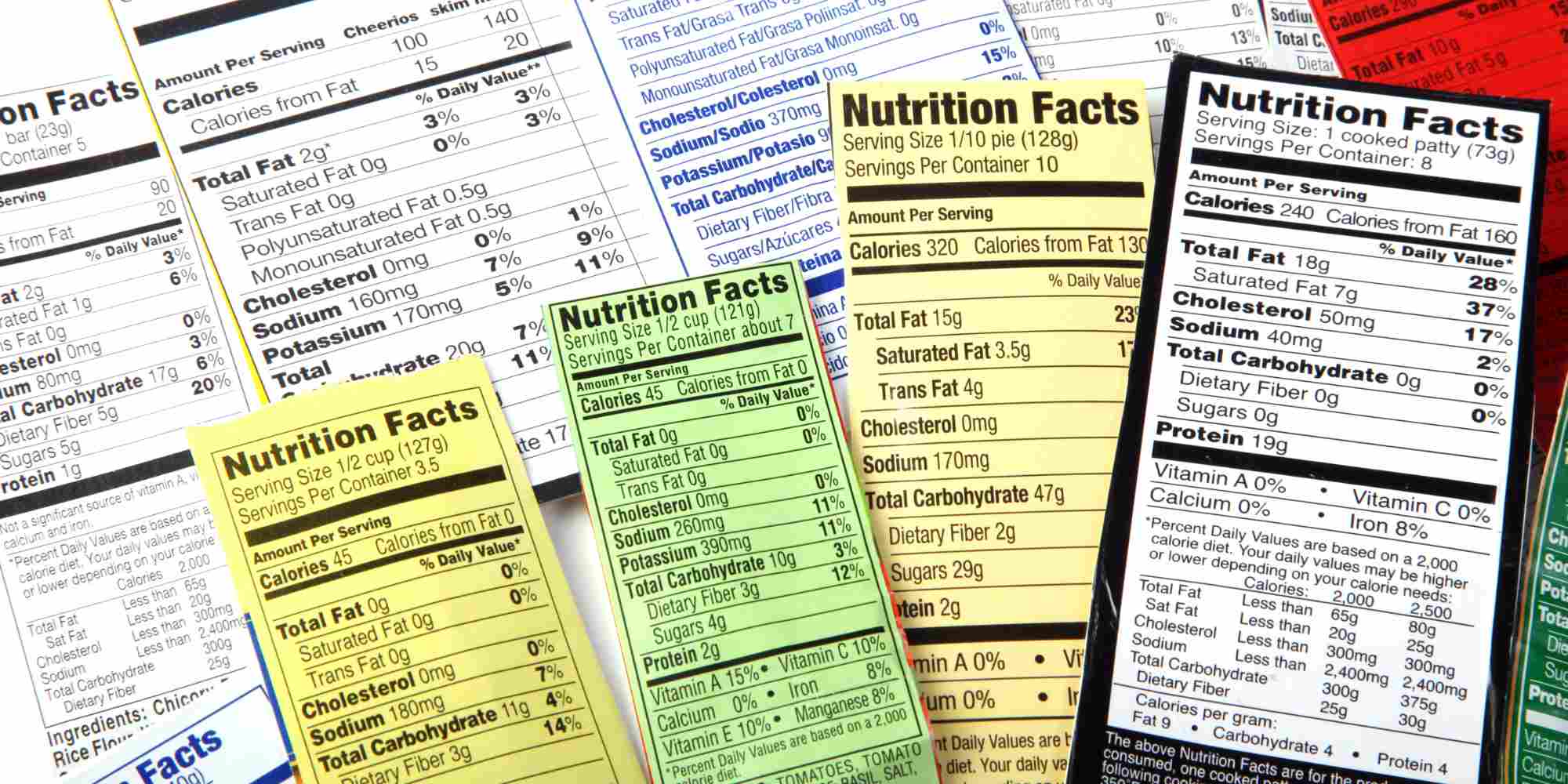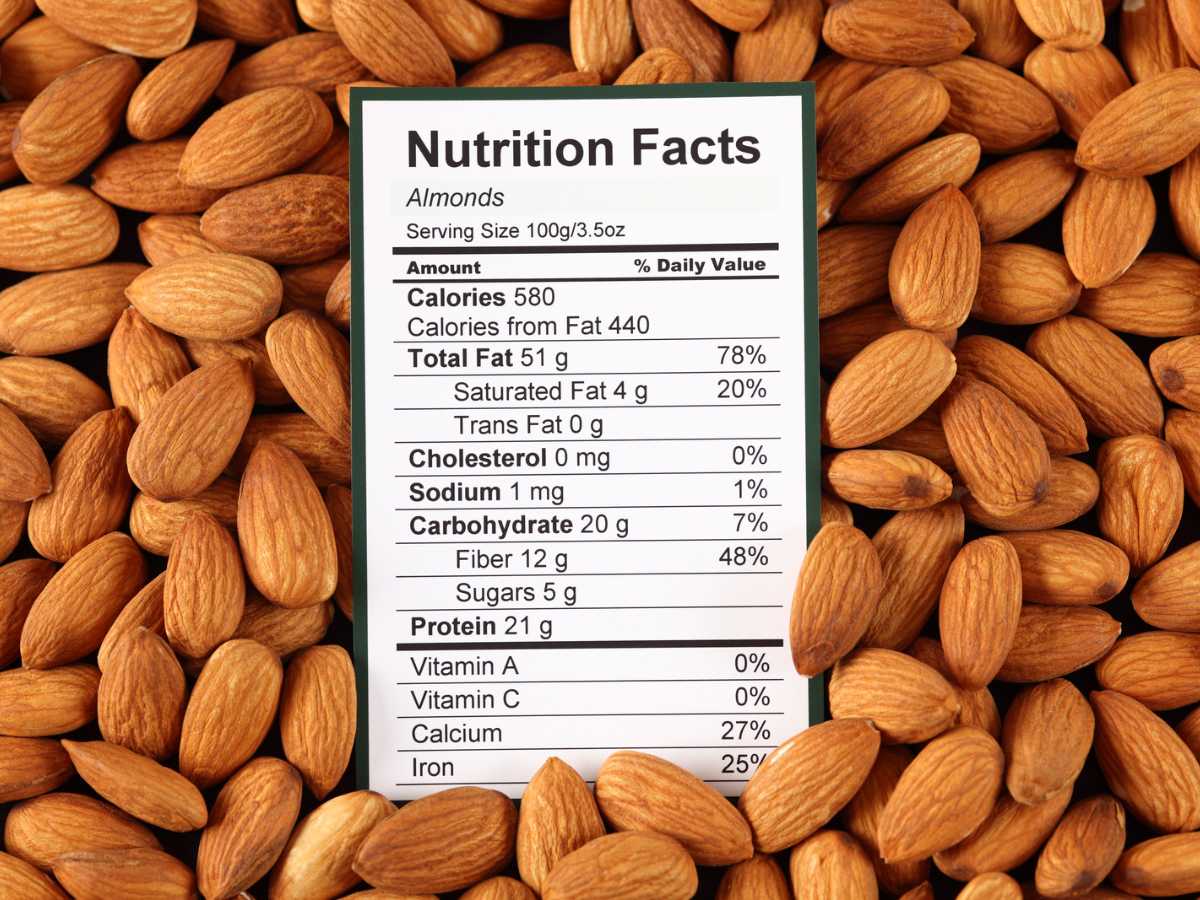Demystifying Nutrition Labels: How to Make Informed Food Choices
Understanding the contents of the food enables us to make informed choices. Assess serving sizes, nutritional content, and calorie count. Allow yourself to manage your calorie intake, compare food products, and select foods. Make conscious decisions about the food you eat.

In today's bustling world of packaged foods and ready-made meals, reading nutrition labels has become an essential skill to making healthy and informed dietary choices. These seemingly complex labels hold valuable information about the nutritional content of the things we consume. Reading food labels allows us to make conscious decisions about our overall well-being.
However, decoding nutrition labels can be quite overwhelming for the average grocery shopper. From deciphering unfamiliar terms to navigating serving sizes and understanding macronutrient compositions, it's no wonder many people find themselves perplexed.
From counting macronutrients to spotting hidden sugars and sodium, I'll equip you with the knowledge to navigate nutrition labels with confidence. Let's venture together and discover the secrets of these tiny numbers on the back of food packaging. Get ready to make empowered food choices for a healthier lifestyle.
Don't judge a meal by its cover
A study published in Public Health Nutrition showed that up to half of average consumers cannot pick out the healthier food product from judging food packaging [1].
See through deceptive claims
Be cautious of the claims that food product manufacturers leave on the front. Food packages may promote their products with deceptive claims to trick us. For example, a bag of potato chips that claims to include 0 trans fat could mean they contain 0.4g of trans fat per serving. The FDA rounding rules allow manufacturers to round values under 0.5 to 0 [2].
Get familiar with food terms
Learn common food terms, such as sugar-free and low fat. For example, if weight loss were your personal target, choosing to consume beef that is lean or extra-lean would be beneficial. You'd reduce the intake of unhealthy fats while still receive essential nutrients.
Pay attention to serving sizes
Paying attention to serving sizes can help you calculate the nutrient composition in the amount you consume. Following the recommended serving sizes is helpful in managing your calorie intake. You can also compare the serving sizes of between alternative products. By doing so, you can assess which option provides the better nutritional value.
Watch out for serving size manipulation
Some products may list unrealistically small serving sizes to make their nutritional content appear more favourable. Pay close attention to packages that contain multiple servings within one portion size. For example, a small bag of chips may contain multiple servings within a package that's designed to be consumed in one sitting.

Monitor salt content
Salt is made of sodium and chloride, but sodium is the substance that hurts us. Excessive sodium consumption is linked to health issues, such as hypertension [3]. Reducing sodium intake helps us reduce blood pressure and any risk of cardiovascular diseases.
Check sodium values
Food labels have a section for sodium. To make accurate comparisons between sodium and other substances of most food product types, check the amount on the "per 100g" column, as serving sizes may vary.
Recommended sodium intake
Most health organisations recommend a daily sodium intake of lower than 2300mg (1 teaspoon of salt) for the average adult. However, recent research suggests that optimal health outcomes are associated with a sodium intake of around 4000mg (just under 2 teaspoons of salt) [4].
Look out for hidden sugars
Sugar makes up a large proportion of the average modern-day diet. Its excessive consumption is linked to health problems.
You don't need sugar
Our bodies depend on glucose for energy. We get glucose from carbohydrates. Added sugars are best avoided entirely. We lose nothing by eliminating sugar. We reduce our risks of obesity, type 2 diabetes, dementia, and cellular aging [5]. While avoiding sugar may be unrealistic, you can at least avoid added sugars.
Identify hidden sugars
The "Total Sugars" section within food labels represents both the added and natural sugars. There may be little chemical differences between natural and added sugars. When reading ingredients, we can more easily determine whether food products use added sugars. Popular and unhealthy added sugars come in many forms:
- Artificial sweeteners, such as sucralose, aspartame, saccharin
- High-fructose corn syrup
- Brown rice syrup, which may contain arsenic [6]
Low fat and fat-free compensation
When food manufacturers remove fat from products, they tend to compensate by adding sugar [7]. Ironically, those who opt for healthier versions of products are actually making the swapping fat for unhealthy sugar.
Calories aren't everything
The amount of calories we get from food depends on several things. The number of calories on the label is can either be over- or underestimated. Inconsistency can come from measurement errors, different growing conditions, farming practices, and processing methods. Calories aren't the only thing to worry about, and here's why.
Food preparation on calories
The way we prepare, cook, and serve food affects the amount of calories we will consume. Food labels may actually overestimate calories, especially if we can prepare the food items in many ways. Frying food has been a major focus in epidemiological studies. Consuming fried food is associated with higher risks of health issues [8].
The microbes in our guts
People who have more gut bacteria are more efficient at metabolizing food. This affects the amount of calories and energy they receive from food. Increasing gut bacteria is useful, but not from a calorie count perspective. Having a good amount of gut bacteria reduces our risk of obesity and other health issues [9].
Eating more fruits, vegetables and whole grains helps increase our gut bacteria. Avoiding processed foods, red meats, and dairy also helps [10].
This has been a fore-warning that calories aren't the only thing we have to worry about. However, we can use calories to manage an optimal amount of nutrient intake to manage our weight.
How to count calories
Watching the amount of calories we consume is crucial in maintaining body weight or achieving fitness goals. To maintain weight, we should eat the right amount of calories our bodies need. To lose or gain weight, we'd want to eat fewer or more calories than our body burns. But how do we determine how many calories our bodies need?
How many calories do we need?
Our recommended calorie intake depends on our age, gender, height, and weight. The average man needs 2500 calories (10,400 kJ) a day to maintain their weight. The average woman needs 2000 calories (8,400 kJ). The amount of calories you'll need varies, with your weight goals and pre-existing health conditions [11]. It's best to seek a dietitian for advice on dietary strategies.
Estimate your calorie needs
If you were curious on how much you'd have to eat to achieve your weight goals, use this calorie counter from YAZIO to estimate your desired daily caloric intake.
You can also access this calculator with imperial units (ft/in, lbs).
Count your macros
You'll want to consume the right amount and the right type of calories. Counting your macronutrients (macros) is important for maintaining a healthy diet. The 3 macros are:
- Carbohydrates: the body's primary source of energy.
- Fats: provide energy, support cell function, and help absorb vitamins
- Proteins: help build and repair tissues, produce enzymes and hormones, and support the immune system
Consuming macros at appropriate amounts is beneficial to our health. The recommended amounts are determined by the macronutrient distribution range.
This video from Mayo Clinic explains the differences between macronutrients and micronutrients.The macronutrient distribution range
The Institute of Medicine published the widely adopted recommended macronutrient distribution range (MDR) in 2002 [12]. The range is:
- Carbohydrates: 45% to 65%
- Protein 10% to 35% (10% to 25% according to Australian Guidelines [13])
- Fat: 20% to 35%
These ranges are based on traditional diets. Following different diets, such as keto diets, would have you follow different MDRs. Your suitable MDR also depends on health status [14]. Look up recommended diets and MDRs that are specific to your health conditions, if any.
Using the macronutrient distribution range
To apply the recommended ranges practically, let's say you want to consume 2000 calories per day. A rough distribution could be 50% carbohydrates, 30% fats, and 20% proteins. You'd be consuming:
- 1000 calories or 250g of carbohydrates (1g of carbs provides 4 calories)
- 600 calories or 67g of fat (1g of fat provides 9 calories)
- 400 calories or 100g of protein (1g of protein provides 4 calories)
You can use nutrient-tracking apps to help monitor your intake. However, it's better to consult healthcare professionals before making significant changes to your diet.
I hope that reading this has empowered you into being more conscious with your food choices the next time you're at a grocery store. The takeaway here shouldn't be that every gram of sugar will kill us. It's that we can form the habit of being more conscious of the food we eat.
Let's learn together
Thank you for reading. Sign up for our weekly newsletter to receive to the latest blog posts, updates, and more delivered straight to your inbox. Don't miss out on valuable insights, useful tips, and fascinating discussions. Join the growing Brief Blink community today and elevate your understanding to new heights.

